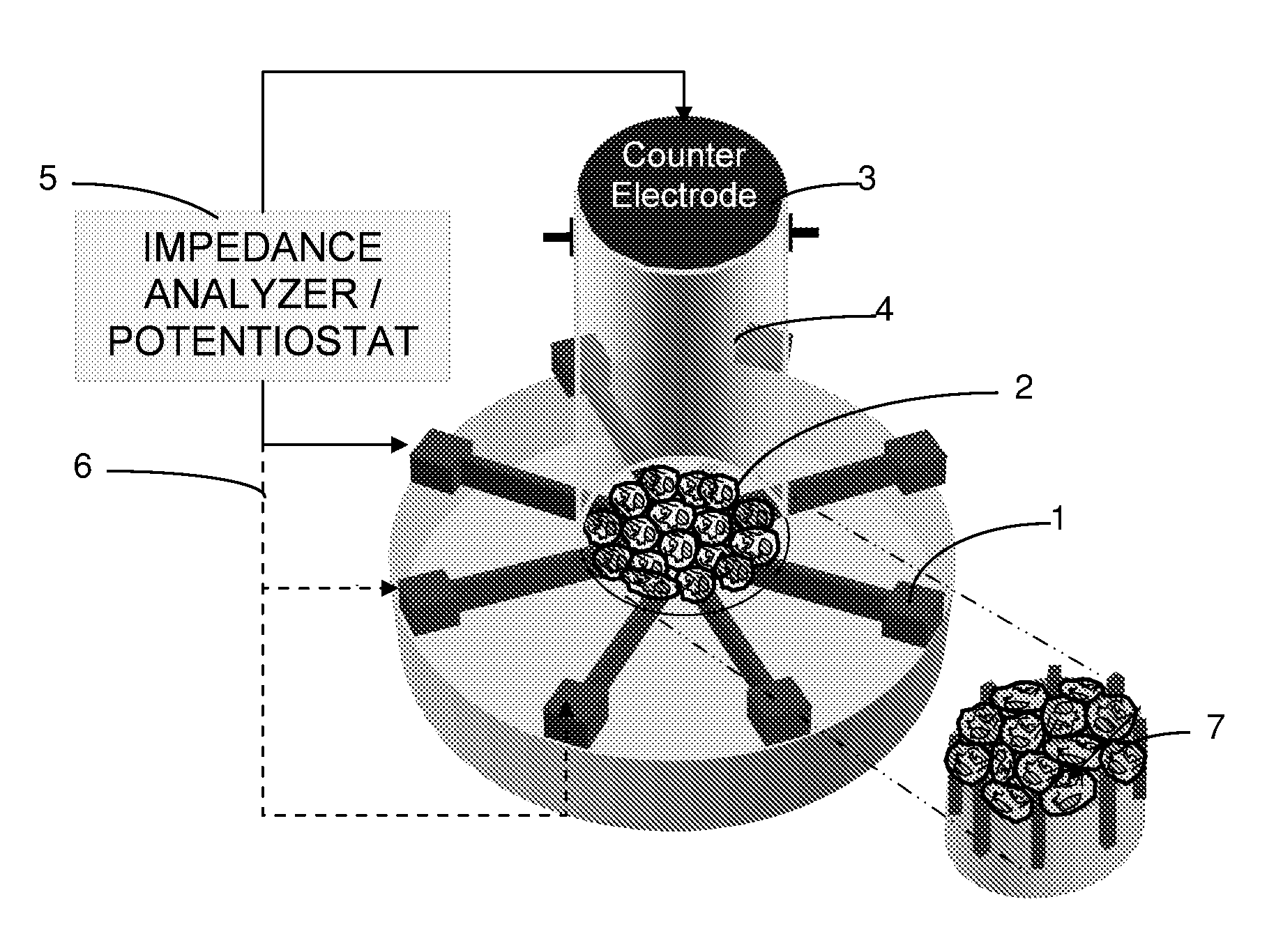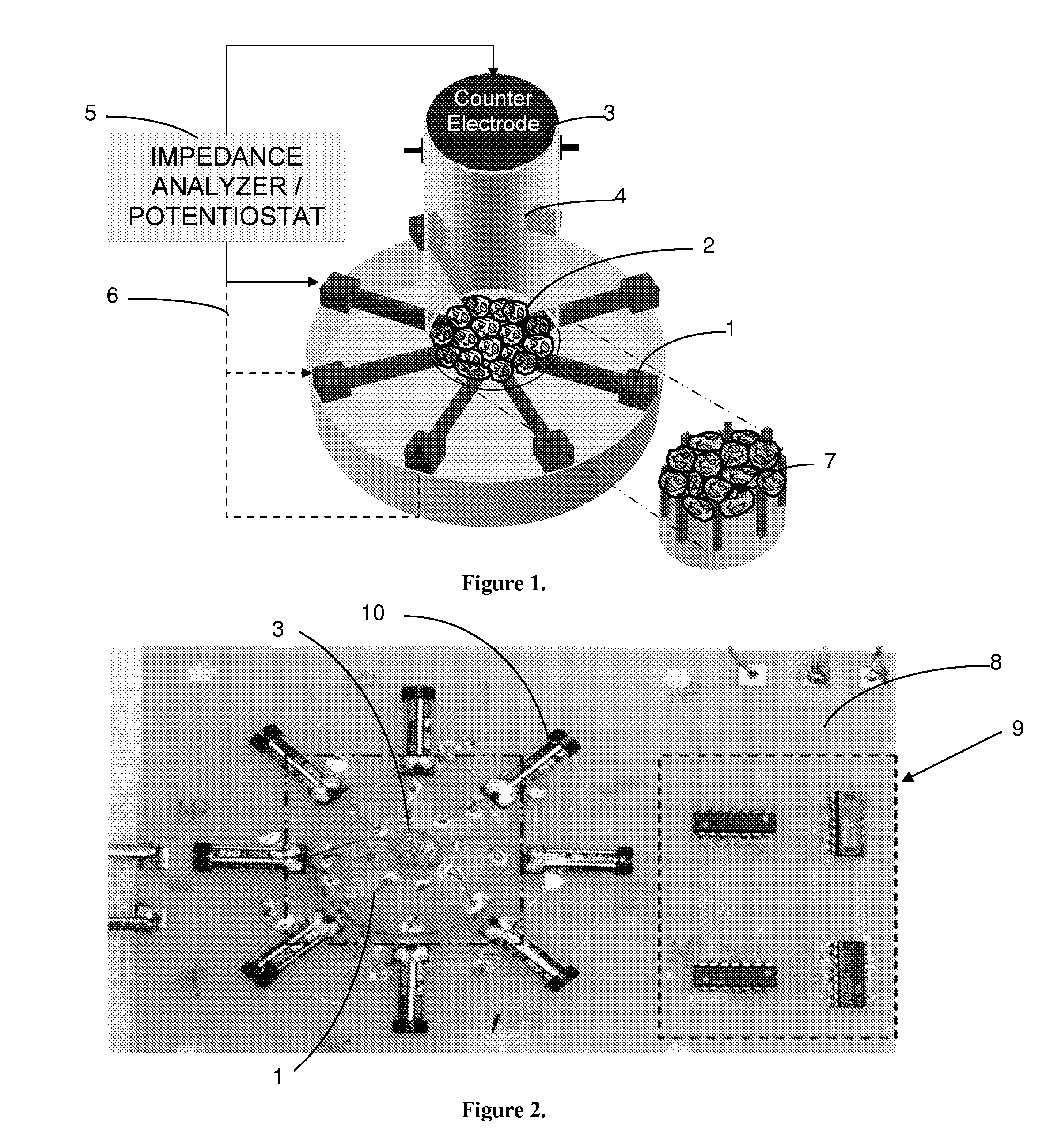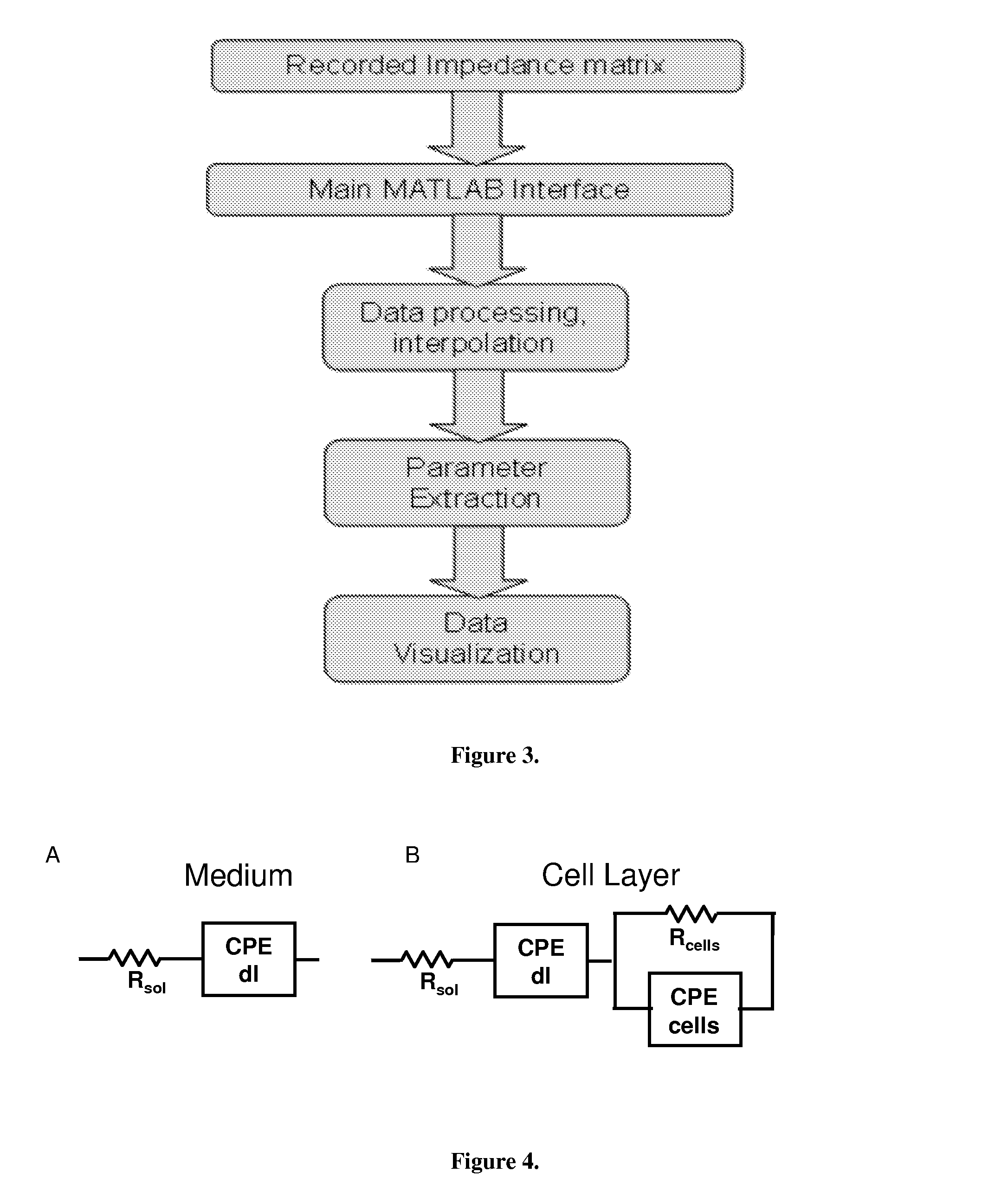Impedance spectroscopy-based cellular analysis device
a cellular analysis and impedance spectroscopy technology, applied in the field of cellular analysis devices, can solve the problems of insufficient spatial resolution of current impedance-based whole-cell biosensors, limited data processing and analysis capabilities, and additional hardware requirements for impedance mapping, so as to increase the number of working electrodes
- Summary
- Abstract
- Description
- Claims
- Application Information
AI Technical Summary
Benefits of technology
Problems solved by technology
Method used
Image
Examples
example 1
Programming the Frequency Response Analyzer (FRA) for Multichannel Impedance Measurements
[0050]Impedance spectroscopy was performed over a frequency range of 25 Hz to 1 MHz using the frequency response analyzer (FRA2) module of the PGSTAT 30 potentiostat / Galvanostat. To achieve 8-electrode IS scan; the FRA programming interface is utilized. In the FRA programming utility, a procedure is a particular type of measurement, e.g. a frequency scan from 1 Hz to 10 Hz. A project could be a collection of such procedures as well as other I / O utilities.
[0051]For an 8-electrode scan, a new project is created which performs the IS procedure 8 times. At the end of each IS scan, a digital high (5V) is output to a selected pin of the digitial I / O port of the PGSTSAT equipment. This output is fed to the trigger input of the 8-electrode switch circuit, facilitating automatic switching to electrode n+1 upon completion of measurements on electrode n. The instrumentation was set up to acquire data autom...
example 2
Effect of Electrode area on Impedance Evaluation of Tissue and Cell Culture
[0057]The effect of microelectrode geometry on the impedance response of four analytes was studied using 0.85% potassium chloride (KCl) (conductivity of 14.28 mS / cm), Human umbilical endothelial cells, (HUVEC, Clonetics Corp., San Diego, Calif.), human skin cells, and medical imaging gel (Spectra 360™ Electrode gel). Since capacitance is directly proportional to area, interfacial polarization is an area dependent property. In the case of microelectrodes, this effect can lead to enormous impedances easily reaching the limit of contemporary measurement equipment, particularly at low frequencies. At small electrodes, high current density can lead to heating and other non-linear effects.
[0058]HUVECs were cultured in endothelial cell growth medium (EGM; Clonetics Corp.) at 37° C. with 5% CO2, and subcultured at 70% confluency. HUVECs passaged less than six times were used in experiments. Twenty-four hours after in...
example 3
HUVEC Cell Impedance
[0067]The HUVEC cells form a confluent adherent layer on the electrode. A mid-frequency (approximately 10 kHz) dispersion attributed to the cell layer is observed in the Bode diagram of HUVEC, seen in FIG. 8. The impedance of an electrode-coating-electrolyte system was modified by cellular growth of a confluent cell layer. The sequence in which dispersions caused by the double layer, coating and cell CPE appear is dependent upon the penetration depth of the AC signal and hence the magnitudes of these CPE's. At even higher frequencies (approximately 50 KHz), the AC signal can penetrate the cell layer adjacent to the electrode surface. At the higher frequencies (approximately 1 MHz), the coating impedance becomes comparable to the series combination of double layer and cell layer capacitances; hence AC passes indiscriminately from all areas of the electrode. At this point the cell constant is ill defined, unless measurements is recorded at high enough frequencies (...
PUM
 Login to View More
Login to View More Abstract
Description
Claims
Application Information
 Login to View More
Login to View More - R&D
- Intellectual Property
- Life Sciences
- Materials
- Tech Scout
- Unparalleled Data Quality
- Higher Quality Content
- 60% Fewer Hallucinations
Browse by: Latest US Patents, China's latest patents, Technical Efficacy Thesaurus, Application Domain, Technology Topic, Popular Technical Reports.
© 2025 PatSnap. All rights reserved.Legal|Privacy policy|Modern Slavery Act Transparency Statement|Sitemap|About US| Contact US: help@patsnap.com



